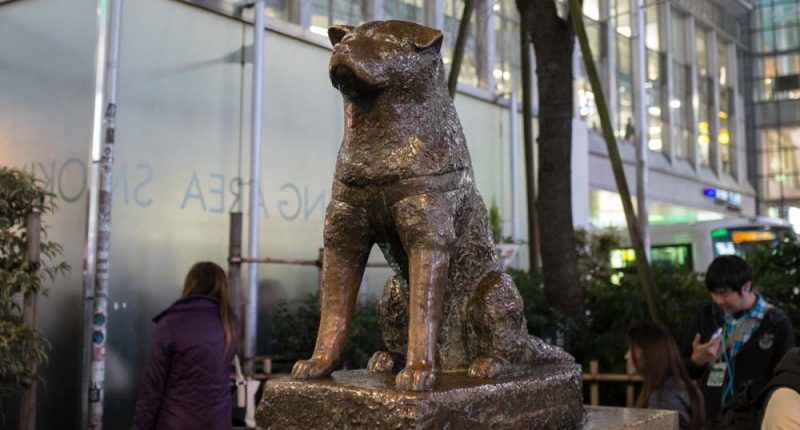Tokyo’s most famous statue is in fact a small bronze dog. The tale goes that Hachiko, an Akita dog, used to wait at Shibuya Station at the same time and place every evening for his master to return home. One day the master, a university professor, did not show—he had died suddenly at work. Despite his master’s passing, Hachiko continued to wait faithfully for his owner at the same time each day until his own death in 1935. The bronze statue stands in the place he used to wait and is now the de facto meeting point in Shibuya. The 2009 film “Hachi: A Dog’s Tale” starring Richard Gere is based on this story (the film itself a remake of a 1987 Japanese film).
The statue was melted down and turned into train parts for the war effort just one day before the Japanese surrendered. The statue you see today was cast in 1948.





